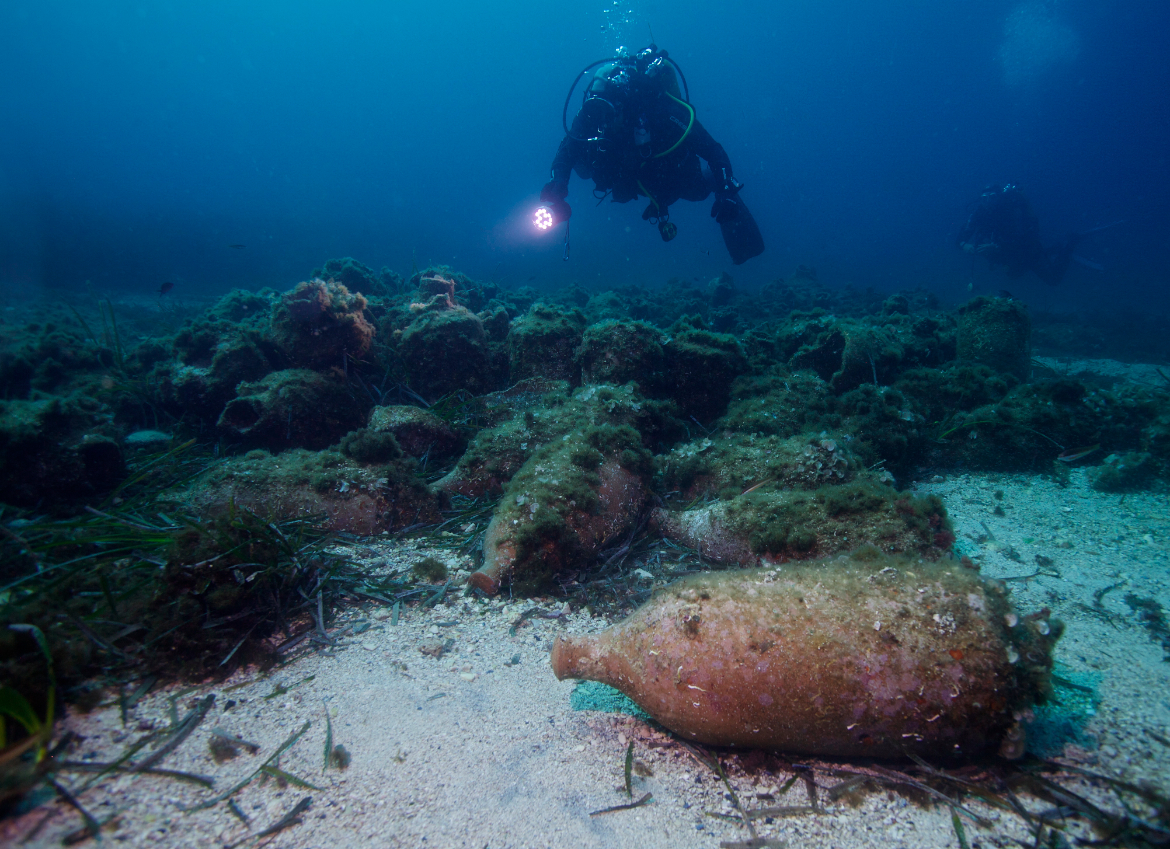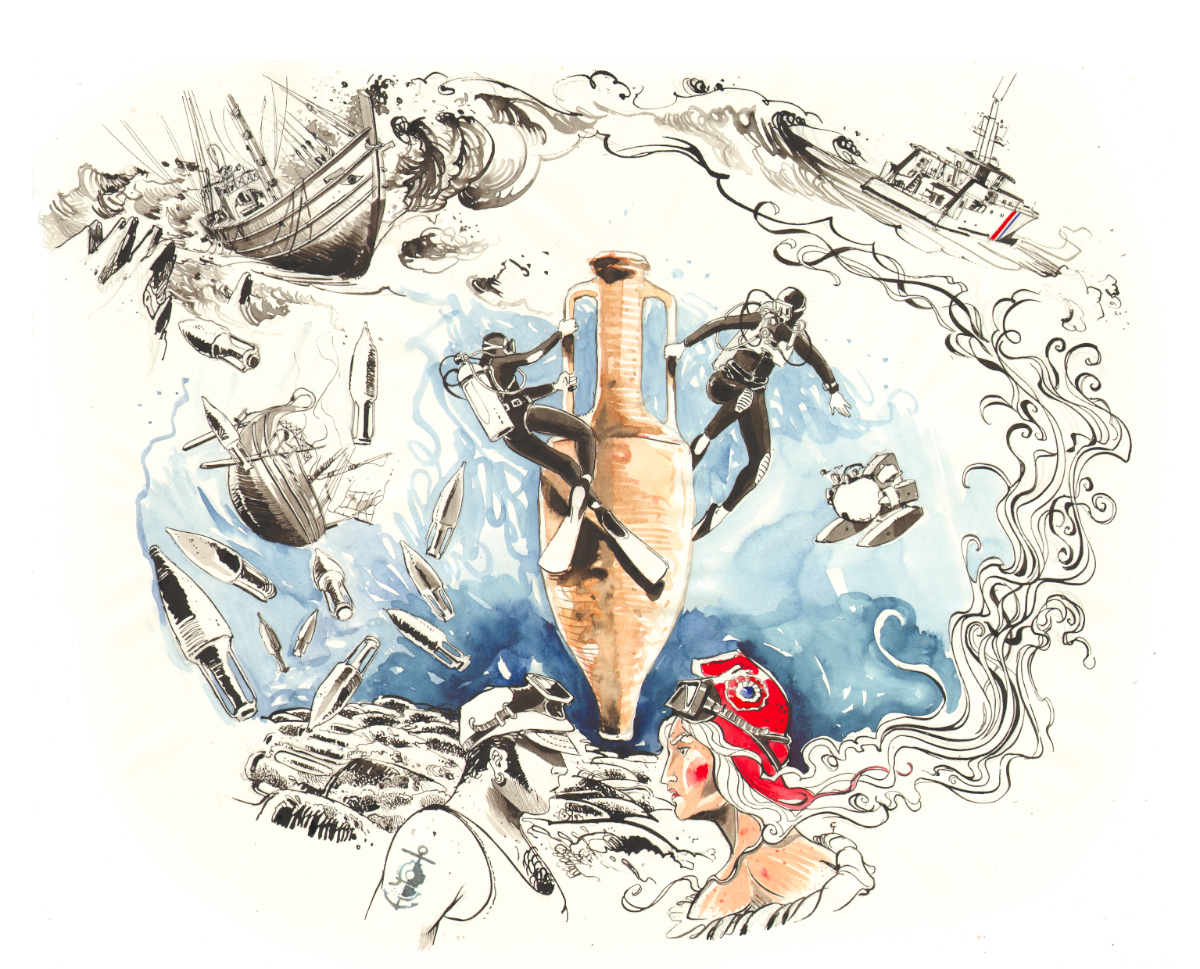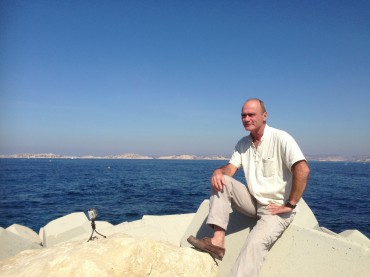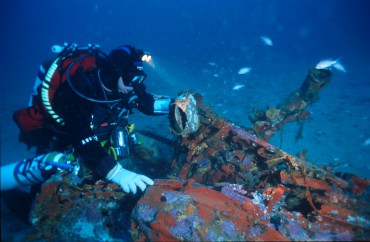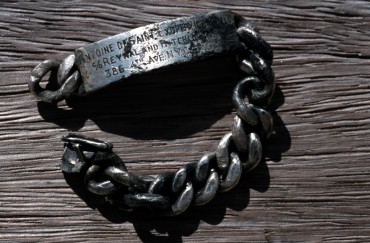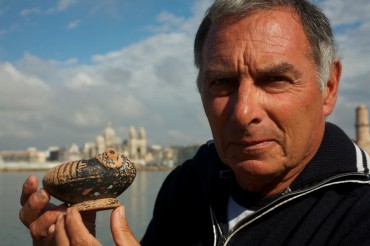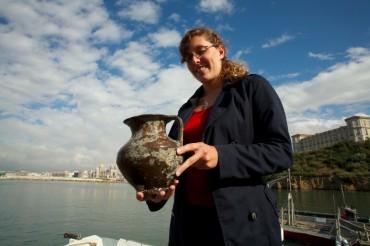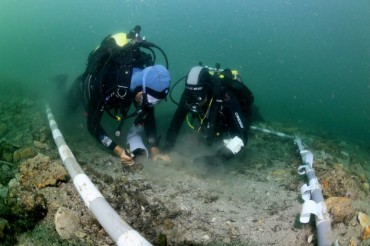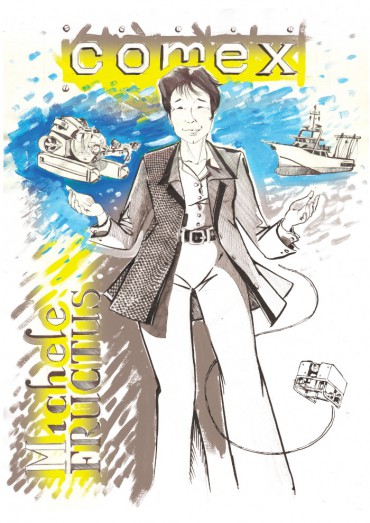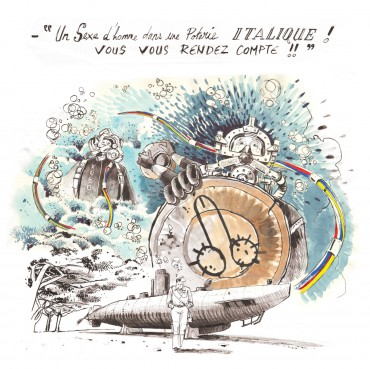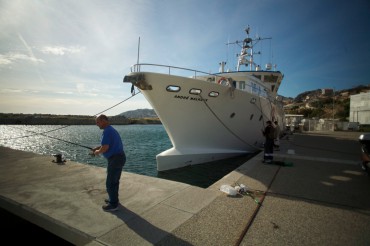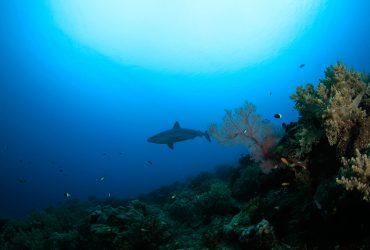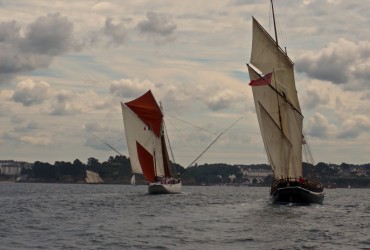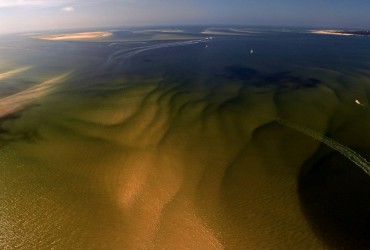Should marine archeology be privatised ?
The mere notion causes an outcry. Michel de Poncins, a former company director, graduate of the Institut d’Etudes Politiques de Paris, with a PhD in Economics; best known as a great slayer of ‘state control’ is one of those against. In 2007, he wrote:
“Recently several hundred objects were seized in the Languedoc Roussillon from those improperly termed ‘looters’; a grossly unfair accusation as the real looters go by another name altogether. The media, trumpeting the news, stated that there were three million wrecks under threat, with millions, who knows, maybe billions of objects on board. These wrecks, listed or not, were a regular occurrence in the old days.
If people can act freely in business, then they should be permitted to explore beneath the sea and invest the necessary capital to add to their personal collections or sell their finds on the open market. The cultural benefits would be immense and research would increase rapidly. The men and women of the State, still prodigiously hungry for activities that will support their own wealth, see things differently. Thus UNESCO, an agency that represents what is rapidly developing as a global totalitarian power, raises the alarm and recommends further strengthening of the rules that govern the seabed. Governments take up the cry and redouble their efforts to take down the so-called looters. The reality is though that the true looters are the government.
According to maritime law which has governed the oceans and seas since the dawn of time, a wreck belongs to the man that discovers it. All obstacles to this rule are attacks on international law and ultimately, the right to property.
This has led to the nationalisation of archaeology – even to its internationalisation, as we have seen with the advent of UNESCO – and has resulted in piles and piles of recovered artefacts languishing in museums and storerooms for a jaded audience. If privatisation were permitted, research and conservation would increase, something sorely lacking at the moment due to a lack of resource. The preserved items would then contribute to large or minor collections for the legitimate satisfaction of their owner and for the increased information of the wider public. Better to give a few friends a moment of wonder when admiring a private collection of East India Company plates or a single ancient amphora than overwhelming yawning and jostling museum crowds with thousands of plates and amphorae all crowded in together.
With such freedom comes money and with money comes research. State meddling is detrimental to this process. In this case, as with anything State controlled, official policy destroys the very thing it seeks to protect. Industrial policy destroyed industry, agricultural policy destroyed agriculture, and cultural policy destroyed culture. Privatising marine archaeology would also herald the end of gang rivalries and conflict born of State monopoly that drives the scarcity and value of objects to unrealistically high prices that would never subsist on an open market.
Freedom of trade generally brings peace whereas State control tends to provoke conflict.”
The Saint Exupery plane
Luc Vanrell is based at the end of the sea wall in Pointe Rouge, Marseille, where he runs a dive club. He is also curator of the Cosquer Cave. In his fifties, he is passionate and athletic; he has discovered a dozen wrecks, both ancient and modern, including the famous Saint Exupery aircraft. Declaring such a find was not an easy process however… eyes fixed on the islands beyond, he explains how it unfolded:
“I didn’t declare the wreck right away for the simple reason that it was not a typical site, it was a field of debris. I found remains stuck in a sediment cliff at a depth of 35 metres, others at 56 and 87 metres. It took time to form an opinion, little by little, dive after dive.
At the time, not all wrecks were considered national heritage, but rather underwater remains. This discovery was the first time a plane wreck was seen as a maritime cultural asset. In May 2000, I went to Maritime Affairs to declare that I had found a plane and a German fighter. The first problem we ran into was whether or not the wreckage was already known and had been declared. The conversation with the authorities was comical:
– Aircrafts in pieces? They have been declared many times!
– How do you know?
– And how do you know…? Maritime Affairs does not have the position of all discovered wrecks. Some remain concealed by DRASSM to prevent looting…
Faced with this, I was forced to approach DRASSM, who due to the media exposure the case had attracted sent the case back to Maritime Affairs. It wasn’t until October 2003 and an airing of the case before the ‘Prefet’ that I received permission to excavate the site.
Declaring an archaeological site can be a complicated matter. In previous years there used to be agreements whereby the person that discovered the wreck had the right to salvage a certain quantity of the ancient amphorae in return for declaring it to the authorities. I still have some of the results of these agreements (with the official certificates of course). These days, many divers prefer to remain silent, or they take first and then declare.
Yet it is our civic duty, heritage is common to all citizens and not only the privilege of the scientists. I think it would be better to disclose the position of all wrecks so that everyone can keep watch over them. If they are kept secret, the looters benefit. We are in a situation rife with paradox. On one side a rigid law that obliges people to declare anything found in the sea; you find a washing machine…you must declare it!
On the other a reward, no longer granted in ancient desirable objects, but hard cash. In both cases, it is no longer an archaeological or scientific process, but a price on treasure hunting. This approach was justified in the 60s and 70s when there were very few competent divers, but today, the primary motivation of someone that discovers a wreck or an ancient shard of pottery, is to be involved with the research – to participate in the scientific adventure. Sadly this does not happen anymore, that person is pushed aside, and rarely has access to the findings. This attitude creates frustration and causes piracy and looting.”
Nothing to declare?
“Nothing but broken pots! I once stumbled on a wreck at about 50 metres. I happened to notice some coral growth and I knew that that specific variety needed a hard surface to grow on, so I brushed away the sand and discovered the neck of a pottery jar. It turned out to be an ancient wreck with its shipment intact! I dived it for years until one day I went down and found an empty hole in the sand. And not a single amphora left… the pirates had found it. It was such a huge loss, before it could be studied and researched, it disappeared without a trace, lost forever.
When it comes to archaeology, divers need to be discerning and for that they need to be informed. It is also very important to improve the relationship between the public and its heritage, which belongs to all of us: if you take something out of the sea, you are stealing from the nation. Today, there is no interface between the people on the ground and those that work in the administration. That link needs to be created.
Particularly as legal measures have no impact on the professional pirates, quite the opposite in fact, it seems to make them even more determined. Everyone knows – especially those that hunt in the Calanques maritime national park – that the bureaucrats work fixed hours and sleep at night…
Finally, the French maritime archaeology authority has an ambiguous status. On one hand it administers a dig – as it does for archaeology ashore – but on the other hand, it has the power to intervene. Sometimes it has the exclusive right to do so, which alienates the divers even more.
It is the eternal issue: Administration versus Public. Except we are all actors in the system, our heritage concerns all of us. It is important to remember that this department is called Ministry of Culture and Communication – it just needs a bit more communication,” Luc Vanrell concluded.
The Pharo’s treasure
At the History Museum in Marseille, I took a walk in the gardens amongst the ruins; I followed the ancient Roman road paved in white stone from the Cassis region, polished by time. The noise of the city faded and gave voice to the old stone that tells a tale of centuries past, of commerce and trade and the offloading of shipments from all over the Mediterranean: the groaning beasts, the creaking carts, the crack of whips and the singing of slaves… In an alcove beneath the main road lies a giant pot, half buried, a remnant of antiquity jutting into the modern world.
In ancient times, the geography of the city of Marseille was different: the landing area of the “Vieux Port” (old port) reached as far as the “Bourse” area which explains why amphorae and even entire boats are dug up during road works in the city.
Further south, at the mouth of the Vieux Port lays the Pharo’s bay, still used for mooring today. I have a rendezvous with Serge Ximenes, another famous wreck diver.
At the foot of the magnificent Pharo’s Palace, the shallow bay is crowded with boat yards… Hard to imagine that beneath the surface and the sound of wood saws and welders is a world of treasure.
GRASM (Maritime Archaeology Research Group) has existed for 41 years. It is a leisure and professional dive school and also a scientific association run by Serge Ximenes, a diminutive man with a deep tan and a passion for his topic. He welcomed me into an office that was overflowing with files – paperwork is the order of the day when you dive ancient wrecks!
Serge has discovered 28 wrecks and declared 450 artefacts. He is from an era when marine archaeology was less bureaucratic and still the domain of passionate divers. He may still have the passion, but it is equalled by frustration: “We are sorely lacking in funding. And the administrative red tape to get a permit to excavate is never-ending, even when we made the discovery! They do everything to discourage us and authorisations are granted sparingly.
The Tiboulen wreck for example is at about 50 metres deep which represents 50 minutes on site for a diver and then 2 hours 30 minutes of decompression in open water. It is no joke. But for two months of research with a whole team, we have received 2,000 Euros. And on top of that, they wanted us to hire Class 3 divers under the pretext that the depth of the site exceeded the legal limit of 20 cm!
As for the ‘cash for discovery’ scheme, it is often paid very late and is never guaranteed as it is entirely at the discretion of the Ministry of Culture, they are judge and jury. In the meantime, DRASSM pays for new premises for their office, they buy a new boat – the Andre Malraux – courtesy of the taxpayer which is far too big and costly to be used for our research, too many expenses for such a ‘small’ operation. They would have been far better off getting several small boats for the same price.”
We move from the office down to the courtyard where numerous artefacts are stored. Last summer, while taking a break from offshore diving, Serge discovered a remarkable source of archaeology right in front of his dive centre. The results of this excavation currently reside in desalination tanks…
Marina Branger, archaeologist, explained: “The area was a temporary mooring and is scattered with artefacts from different eras, right back to the Bronze Age in the 2nd century BC, it is a complete puzzle. Last summer we received authorisation to conduct four surveys over 4 m2. We found some very beautiful items, but there is without doubt much more remaining beneath the surface.”
Serge placed a magnificent oil lamp back in the tank and continued: “We have trained many maritime archaeologists here, some of them even work for DRASSM now. But Michel L’Hour now wants to shut places like ours down and centralise all the training at the INPP (National Institute for Professional Diving) which is based at Pointe Rouge harbour in Marseille and the price of training will increase from 1,500 Euros to 5,000. They are mocking us. You should go and ask what Michele Fructus from COMEX thinks of DRASSM…” he suggested.
A pottery penis
“A man’s penis in graffiti on ancient pottery – can you imagine!” Michele Fructus grinned as she told the story…
Female, astute, daughter of Henri Germain Delauze, founder of COMEX, it is Michele that presides over the fate of the underwater exploration company these days.
“It was drawn in black marker pen on a ceramic plate that was dug out and was due to be taken to the surface the next day. But during the night, the pirates came to leave us this message, a snub…they know everything and are everywhere. This happened on the wreck that my father discovered in 1977, the Sud Cavaux, 64metres beneath the surface in the Frioul Islands. It was loaded with amphorae and other pottery.
During the 1996 campaign, we put significant resources at the disposal of DRASSM including submarines and boats, to carry out the first photogrammetric coverage of a wreck using a submarine and a blaster, but that did not stop the looters who saw an opportunity to exploit. Historically, all divers are treasure hunters. It’s the dream: everyone wants to discover a galleon, to bring a souvenir from another era to the surface. It is human nature and normally has very little impact. But there are those that pillage for resale, and they are very well organised.
Previously under the Malraux Law, there was the ‘inventor’s share’ and that system worked very well. It provided an incentive to declare any treasure found as the discoverer was awarded up to 50% of the discovery. People like my father, like Jean Pierre Joncheray, discovered and declared dozens of wrecks in this way, but everything has changed since then and now pirates squander priceless objects.”
The Sun King’s boat
Outside the window, the wrecked Alose submarine languishes amongst the parasol pines; it was discovered by Jean Pierre Joncheray and brought to the surface by COMEX…
“Today, our relations with DRASSM are both cordial and conflicted. Cordial because we are driven by the same motivation; my father never spared his time or resources when it came to marine archaeology, it was his passion. At the same time, despite the fact that we have financed countless DRASSM missions, our excavation requests often go unanswered. Such ingratitude! So I decided to end any further collaboration with this organisation.
The result is that we are experiencing a period of terrible intimidation, at the slightest hint or the slightest denunciation, Michel L’Hour sends the Gendarmerie. The man is suffering from some sort of perversion; he behaves like the tyrannical Sun King. He seems to think he can manage every maritime archaeology site alone.
And yet, time is of the essence. Granted these wrecks have waited 2,000 years to be discovered, but in our modern times, they are at risk from the ever-present pirates and from the trawlers that rake the seabed, destroying everything in their path. Not to mention the effects of silt. Many wrecks will be lost forever because of a lack of competent people to inventory them before it is too late.
And if that were not bad enough, the money wasting is criminal. The Andre Malraux is the wrong boat for French marine archaeology. It was very expensive and is badly thought out. For example, it cannot carry a submarine and there are no decompression tanks on board… Such an oversight is incomprehensible! There was in fact a Senate enquiry about this. Jean Louis Borloo, Pierre Lellouche and other politicians were against building this boat…
We offered to charter the Minibex out to them at a very reasonable price, it would have been a lot less costly – a three month mission would have cost them less than the running costs of the Andre Malraux for the year, but Michel L’Hour was determined to use his boat.”
